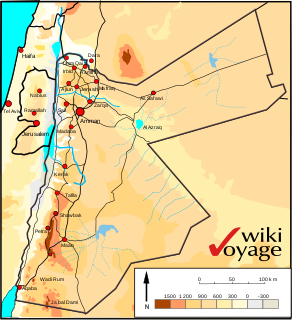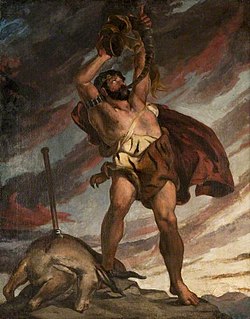 W
WThe Book of Chronicles is a Hebrew prose work constituting part of Jewish and Christian scripture. It contains a genealogy starting from Adam, and a narrative of the history of ancient Judah and Israel until the proclamation of King Cyrus the Great.
 W
WAchsah, was Caleb ben Yefune's only daughter. The meaning of her name is uncertain.
 W
WThe Assyrian captivity is the period in the history of Ancient Israel and Judah during which several thousand Israelites of ancient Samaria were resettled as captives by Assyria. This is one of the many instances of forcible relocations implemented by the Neo-Assyrian Empire. The Northern Kingdom of Israel was conquered by the Neo-Assyrian monarchs, Tiglath-Pileser III (Pul) and Shalmaneser V. The later Assyrian rulers Sargon II and his son and successor, Sennacherib, were responsible for finishing the twenty-year demise of Israel's northern ten-tribe kingdom, although they did not overtake the Southern Kingdom. Jerusalem was besieged, but not taken. The tribes forcibly resettled by Assyria later became known as the Ten Lost Tribes.
 W
WAzariah was a prophet described in 2 Chronicles 15. The Spirit of God is described as coming upon him, and he goes to meet King Asa of Judah to exhort him to carry out a work of reform. In response to Azariah's encouragement, Asa carried out a number of reforms including the destruction of idols and repairs to the altar of Yahweh in the Jerusalem Temple complex. The Bible records that a period of peace followed the carrying out of these reforms.
 W
WThe Babylonian captivity or Babylonian exile is the period in Jewish history during which a number of people from the ancient Kingdom of Judah were captives in Babylon, the capital of the Neo-Babylonian Empire.
 W
WThe Casluhim or Casluhites were an ancient Egyptian people mentioned in the Bible and related literature.
 W
WThe Chronicler is the author, or group of authors, to whom biblical scholars have attributed the composition of the Books of Chronicles, the Book of Ezra, and the Book of Nehemiah in the Hebrew Bible. Although these books contain overlapping and sometimes conflicting accounts, "almost all scholars agree that the four books were put together as a continuous story".
 W
WCyrus the Great figures in the Hebrew Bible as the patron and deliverer of the Jews. He is mentioned 23 times by name and alluded to several times more. According to the Bible, Cyrus the Great, king of Persia, was the monarch under whom the Babylonian captivity ended. In the first year of his reign he was prompted by God to decree that the Temple in Jerusalem should be rebuilt and that such Jews as cared to might return to their land for this purpose. Moreover, he showed his interest in the project by sending back with them the sacred vessels which had been taken from the First Temple and a considerable sum of money with which to buy building materials. The existence of the decree has been challenged.
 W
WHazzelelponi is a biblical woman mentioned in 1 Chronicles 4:3. Tzelafon was named after her.
 W
WMount Seir is the ancient and biblical name for a mountainous region stretching between the Dead Sea and the Gulf of Aqaba in the northwestern region of Edom and southeast of the Kingdom of Judah. It may also have marked the older historical limit of Ancient Egypt in Canaan. A place called "Seir, in the land of Shasu", thought to be near Petra, Jordan, is listed in the temple of Amenhotep III at Soleb.
 W
WNimrod, a biblical figure described as a king in the land of Shinar (Mesopotamia), was, according to the Book of Genesis and Books of Chronicles, the son of Cush. The Bible states that he was "a mighty hunter before the Lord [and] ... began to be mighty in the earth". Extra-biblical traditions associating him with the Tower of Babel led to his reputation as a king who was rebellious against God.